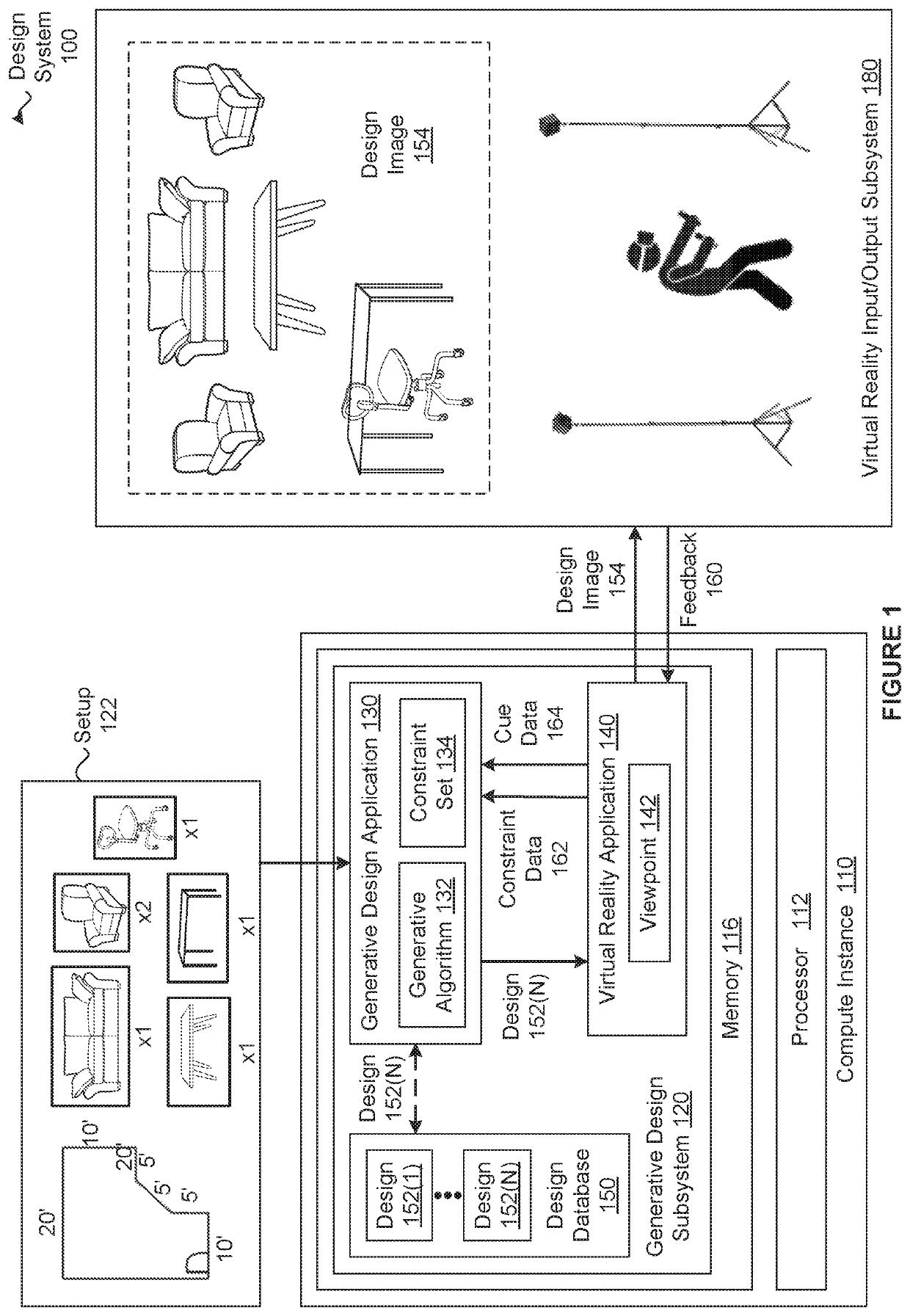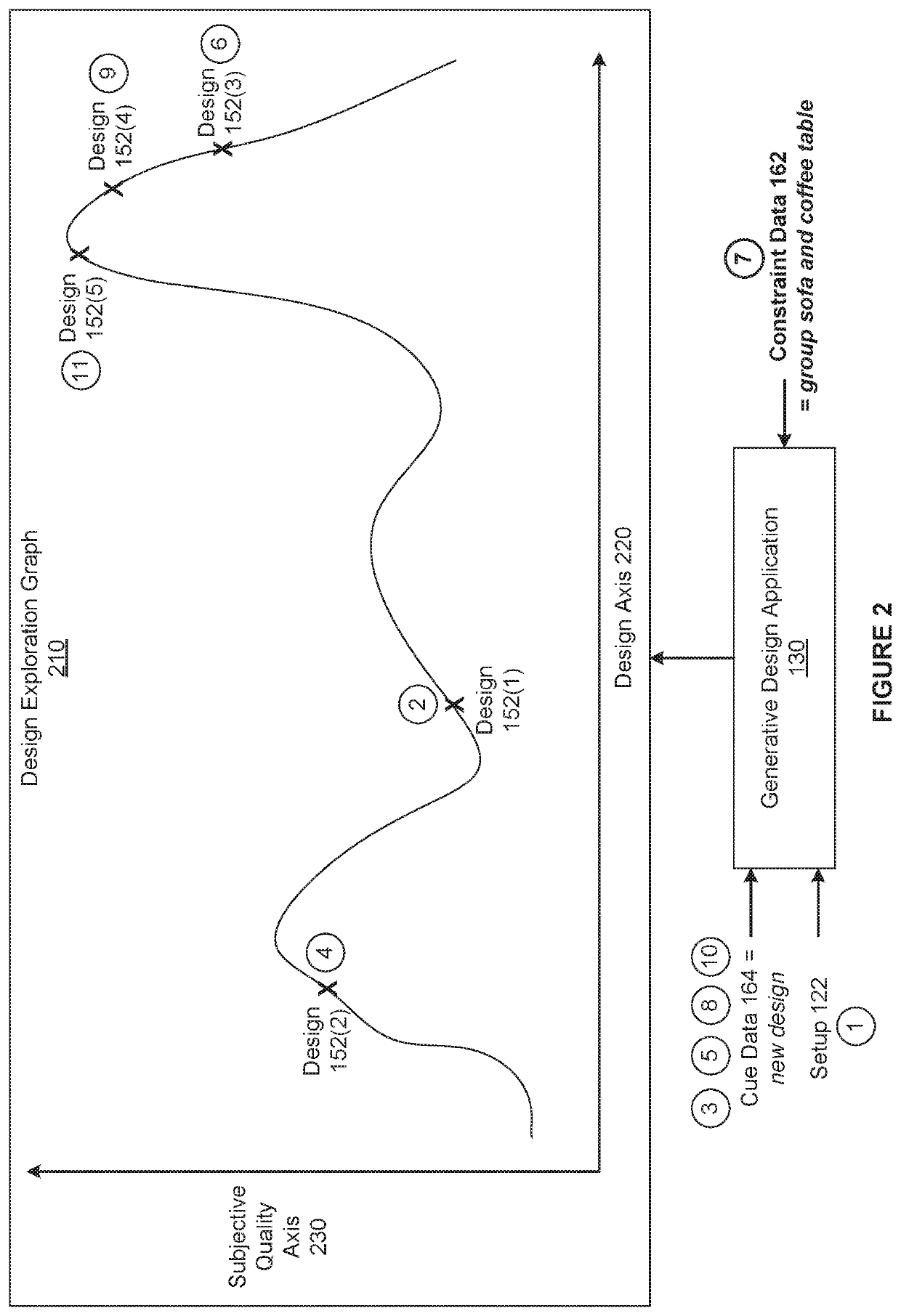Computer-aided techniques for iteratively generating designs
a technology of computer-aided design and iterative generation, applied in the field of computer-aided design iterative generation, can solve the problems of inability to accurately specify the design goals, time-consuming and labor-intensive manual generating and scrutinizing prototypes, and inefficient, so as to reduce time and effort and efficiently specify the design goals
- Summary
- Abstract
- Description
- Claims
- Application Information
AI Technical Summary
Benefits of technology
Problems solved by technology
Method used
Image
Examples
Embodiment Construction
[0001]Embodiments of the present invention relate generally to computer-aided design software and, more specifically, to computer-aided techniques for iteratively generating designs.
Description of the Related Art
[0002]During a typical design process, a designer usually lays out representations of different objects multiple times in order to generate a variety of different designs. Further, this layout process is usually a manual process. For example, a designer could manually position and orient different icons representing different pieces of furniture within an image of a room to generate various designs representing different room layouts. As part of this design process, the designer ensures that each generated design includes desirable features and efficiencies, periodically discarding sub-optimal designs. For example, a designer could ensure that a television is positioned along a north wall in each design and, after reviewing several designs, discard the designs in which a sof...
PUM
 Login to View More
Login to View More Abstract
Description
Claims
Application Information
 Login to View More
Login to View More - R&D
- Intellectual Property
- Life Sciences
- Materials
- Tech Scout
- Unparalleled Data Quality
- Higher Quality Content
- 60% Fewer Hallucinations
Browse by: Latest US Patents, China's latest patents, Technical Efficacy Thesaurus, Application Domain, Technology Topic, Popular Technical Reports.
© 2025 PatSnap. All rights reserved.Legal|Privacy policy|Modern Slavery Act Transparency Statement|Sitemap|About US| Contact US: help@patsnap.com



